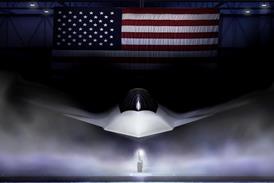The US Department of the Interior has announced it will investigate the utility of optionally manned helicopters for forest firefighting, a concept that already is gaining traction across the Pacific Ocean in Australia.
“The purpose of this demonstration is to assess the feasibility of utilizing these types of aircraft for a variety of missions, including, but not limited to fire suppression at night and during low visibility conditions as well as cargo delivery,” Interior says. “At this time we are asking for an initial response of capable companies interested in demonstrating this type of aircraft.”
Though several companies have flight tested technologies to convert manned helicopters to optionally manned configuration, the Kaman Aerospace and Lockheed Martin K-MAX is the only one on the market with significant operational experience, gained during a years-long tour of Afghanistan semi-autonomously delivering cargo to troops at forward operating bases. Sikorsky’s MATRIX project, has tested an S-76 as an optionally manned platform. Northrop Grumman has developed the MQ-8C Fire Scout in conjunction with the US navy, but the aircraft is a fully unmanned Bell 407, which would not fit Interior’s desire for optionally piloted helicopters.
The announcement that the department, which administers national parks and other public lands and historical sites, follows a 5 November demonstration in which Kaman Aerospace and Lockheed displayed the firefighting capabilities on an unmanned K-MAX helicopter. Within the Interior Department is the Office of Aviation Services, which includes an unmanned air systems division that, among other duties, aids in monitoring and fighting fires on federal land.
The aircraft completed eight firefighting scenarios at Griffiss International Airport in upstate New York in which it gathered water and doused controlled burns without a pilot aboard.
An example of Lockheed’s Indago quadcopter fed information to the K-MAX ground control operator to demonstrate how the small UAV would be launched by a firefighter on the fire line to provide situational awareness and to designate a target for the K-MAX.
Indago recently was used to help control wildfires in Western Australia, where one of the aircraft flew over a live fire at night and used an infrared sensor to map the fire zone, according to Lockheed. Australian helicopter service provider Heliwest purchased an Indago based on the success of Lockheed’s November demonstration and provided the service to a planning and incident management team on the ground, but was not working in tandem with a K-MAX.
Tim Hand, Heliwest's chief UAV operator said on 26 January that he “saw opportunity for future growth in unmanned systems as they are applied to firefighting, surveying, task inspections and other civil and commercial areas.”
The announcement of the “upcoming vendor demonstration for optionally-piloted heavy-lift helicopters,” did not mention any specific airframes. The agency will conduct the demo in “high desert and mountainous terrain similar to wildland fire conditions and environment,” and is tentatively planned for May in Boise, Idaho.
Lockheed spokesperson Emily Kleiman says the company is assessing whether to participate in the demonstration, “but this would be an excellent opportunity to demonstrate K-MAX’s capabilities for the Department of Interior, and it would leverage our recent firefighting demonstration in November.
The US Interior Department’s solicitation calls for responses from manufacturers whose products could demonstrate a list of specific actions, including external load pickup and delivery without a pilot aboard, dropping a cargo of water on a specified target, fireline building with a bucket, autonomous water pickup from various sources, inflight retasking and providing real-time imagery to a ground control station.
Source: FlightGlobal.com


























